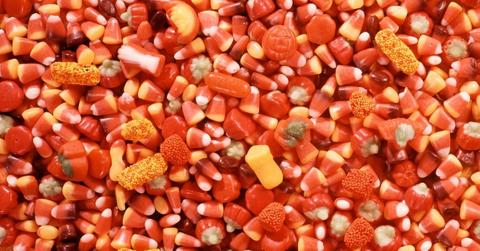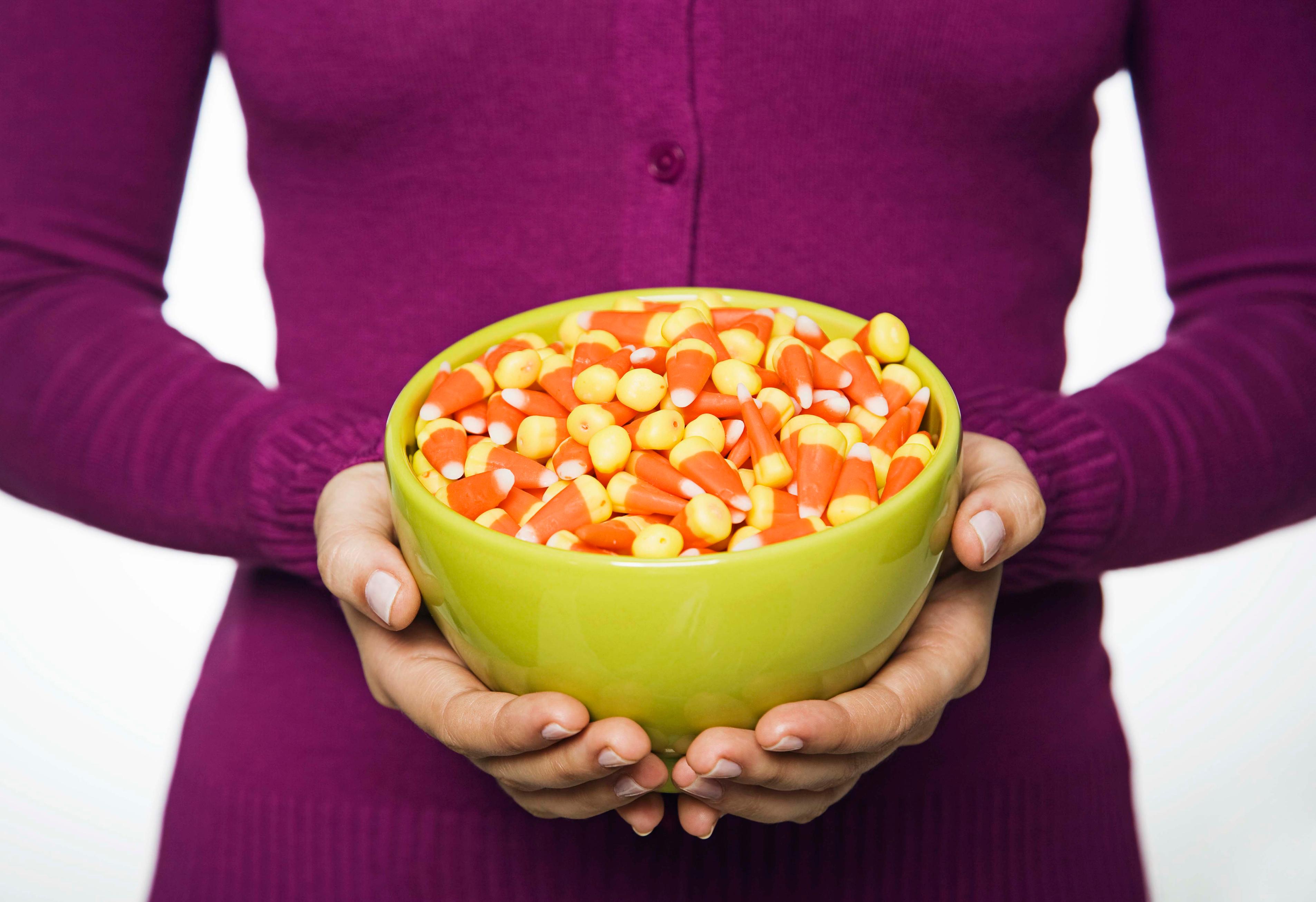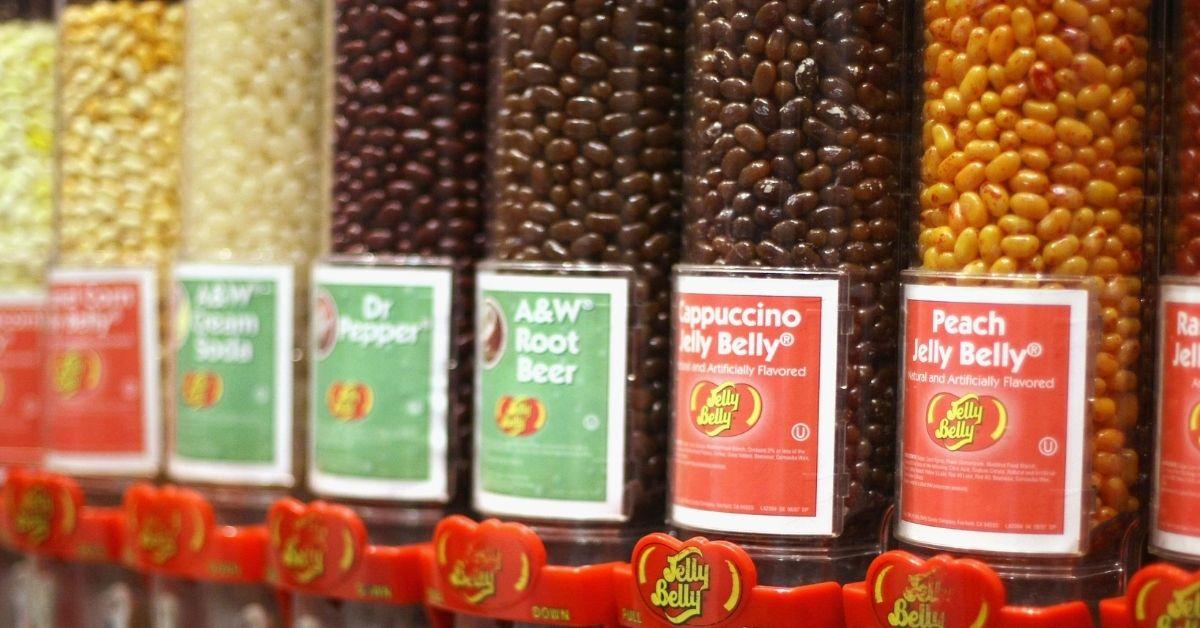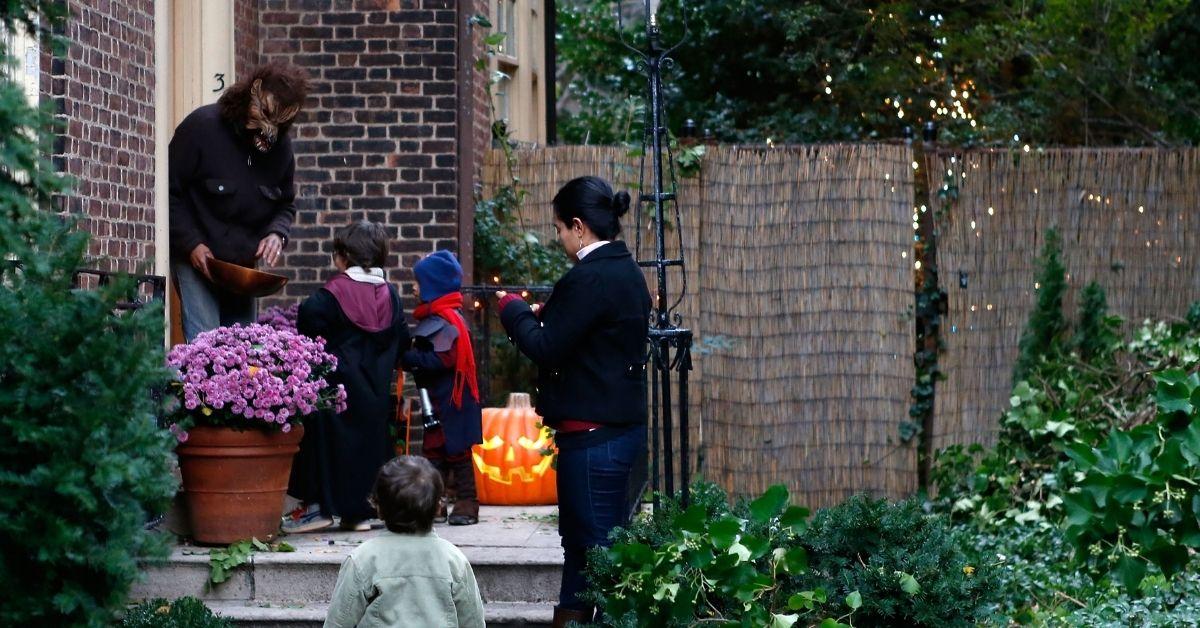Wait, Candy Corn Used to Be Called ”Chicken Feed"? The Candy's History, Explained
Published Oct. 20 2021, 9:42 a.m. ET

When it comes to Halloween candy, candy corn gets a bad rap. The sweet tri-colored kernels continue to top lists of the worst Halloween candy. Actor and comedian Lewis Black has a whole rant about how much he dislikes the bite-sized candies. Not to mention, Moose A. Moose, from Nick Jr.'s Moose and Zee, has a whole anthem dedicated to the candy, called, “I Don’t Like Candy Corn."
I'll be honest, I enjoy candy corn. (Yes, really!) Not just for its yummy taste, but also its cultural significance — it’s a bona fide Halloween staple. In fact, it actually has a pretty unique backstory. Did you know that it’s one of the oldest candies? It also used to go by a different name. Here’s everything we know about the history of candy corn.

Candy corn was invented in the 1880s.
Candy corn was said to have been invented in the 1880s by a Wunderlee Candy Company employee named George Renninger, as National Geographic reports. In 1898, the Goelitz Candy Company (now known as the Jelly Belly Candy Company) started producing the tiny treat, and it was a big success. As written on the company site, "[Candy corn] was so successful it carried the company through two world wars and the Depression."
Goelitz Candy Company would eventually rebrand to the Jelly Belly Candy Company after it introduced its iconic jelly bean. However, for 75 years, candy corn was its main product.
But at the time, Goelitz Candy Company wasn't calling it candy corn. It also didn’t become associated with Halloween until the mid-20th century.

Candy corn used to go by this agriculture-inspired name.
When the treat was first introduced, Americans thought of it as a sweet fake corn that was supposed to be enjoyed all year round. But here's the thing. Americans weren't really eating a lot of corn prior to World War I. It wasn't very tasty, as sweet hybrid plants weren't around yet. However, it was very cheap, which made it good food for pigs and chickens.
Because of that, Goelitz Candy Company named its candy corn “Chicken Feed” and packaged it in a box with a rooster on the front. It was marketed this way in hopes that it would appeal to the country's agricultural roots. At the time, almost half of the nation’s workforce lived on farms.
While Halloween arrived in the U.S. in the 1840s, the act of trick-or-treating didn’t start until over a century later after World War II sugar rations were lifted, according to History.com.
Around that time, candy confectioners wanted to lean more into the farm and harvest spirit that’s associated with fall. They decided to get creative and began churning out candy pumpkins, turnips, chestnuts, and clover leaves using the same ingredients found in its "Chicken Feed." While the craze behind “Chicken Feed” died down, the sugary treat became a seasonal staple to enjoy in the autumn and began making its way into trick-or-treaters' baskets.

Even after all these years, candy corn's recipe has remained the same.
After all these years, the recipe for candy corn has remained the same. It is made from a mix of sugar, fondant, corn syrup, vanilla, and marshmallow creme. In the candy's early days, the kernels were all made by hand; however, the process is now done entirely by machines.